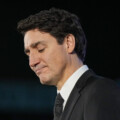What’s the path to victory? Notwithstanding recent polling that shows them leading the Trudeau government, this question grips the federal Conservative Party after three successive defeats.
Among Canadian conservatives, a theory is setting in that posits that electoral success is to be found by becoming a movement of the working class. After all, working-class folks have been left behind by the modern economy, as well as ignored, disrespected, and disdained by the champagne socialists of Canada’s political class. These voters seem more open than in the past to conservative ideas and voices.
Former Ontario Labour Minister Monte McNaughton has been the Conservative politician most closely associated with this newfound attention paid to working-class Canadians in particular and the so-called “political realignment” in general. He made this focus explicit during his time in office, stating at different times that “the future of Conservatism lies with the working class.”
The future of conservatism certainly includes the working class. But success will only be found if it encompasses more than a single segment of voters. To focus conservatism on a single demographic group, or to provide that group with disproportionate influence on the movement’s policy and politics, may yield some small short-term gains by expanding its voting coalition and countering the perceptions that conservatism is primarily concerned with business interests or the wealthy. Ultimately, however, this would come with long-term costs in the form of declining public support and diminished electoral prospects. The future of conservatism, in other words, must lie in a broad-based, multi-class coalition.
Who is ‘working class’ in the 21st century?
Traditionally, people who were paid by the hour, who did physical work that required less formal education, and who earned less than their university-educated counterparts were classified as working class. The working class sold their labour in discrete amounts of time in return for a wage. Blue collar, not white collar. Maybe they were unionized or maybe not. As one wag said, “The middle class shower before work. The working class shower after work.”
In today’s economy, however, are the demarcations education, income, the type of work, or your position within the management structure? Is this group defined strictly by economic status? Or is it defined culturally by shared attributes and values? Is a unionized autoworker with a high school diploma who earns more than an office worker with a university degree still considered working class? What cultural and political commonality exists between immigrant women who work for minimum wage in retail and the highly paid white male electricians and home builders? Defining “working class” in the 21st century is as futile as defining “good art.”
An example of such challenge is that even scholarly efforts to define the working class struggle with these challenges. A 2022 paper by the Cardus Institute which defined working class jobs as those that typically don’t require post-secondary credentials found that more than half of Canadians in such jobs actually had post-secondary experience or qualifications.
The impossibility of defining membership in the class makes it just too nebulous for any coherent political program. Try as hard as you can but it’s not a delineated and identifiable group with distinct but common attributes. It’s a polyglot. Therefore, it defies the basic marketing requirements of shared tastes, segmentation, and targetability.
Even the label “working class” is a dated one and somewhat pejorative with its connotations of manual work, unionism, labour-management tension, and its rank on the social ladder below middle class but above low income. Does anyone still view themselves as working class in preference to middle class? I hazard to guess that the only people who still use the term are politicians.
A small and shrinking pool
There’s another reason why it’s a fool’s errand for conservatives to rely exclusively on that segment of Canada for its electoral success. Simply put, there are not enough of those folks left out there.
In 1997, 34 percent of employees worked under a collective agreement. By 2021 that number had declined to 31 percent. And in the private sector, the unionization rate fell from 19 percent in 1997 to just 13.8 percent in 2021. In other words, only one in seven employees in the private sector today is unionized and that number is dropping.
Viewed through the education lens, it’s the same story. Canadians are becoming more educated and less likely to be considered as working class. Between 2016 and 2021, the percentage of working adults who had a bachelor’s degree or higher climbed more than four percentage points to 33 percent. In 2019, 73 percent of Canadians aged 25 to 34 had completed postsecondary schooling compared with 59 percent in 2000. That is a dramatic jump.
Conservatism cannot rely on the working class alone to bring it into power when the demographic is shrinking every year.

Go for the bigger market
Should Conservatives appeal to blue-collar men and women? Absolutely. But they also need to appeal to IT workers, office workers, urban professionals, soccer moms, and aspirational immigrants in the long and quiet struggle for a better life.
IT workers—the highly educated, highly mobile, highly ethnic, high-income, entrepreneurial, footloose knowledge workers of the 21st century—should be one of the target markets. But having worked with them closely for years, I can attest that they certainly do not view themselves as working class, neither financially, politically, culturally, nor attitudinally.
Conservatism must be made to appeal to a larger expanse of the cultural and political spectrum, from the lower income segments up through to the managerial and professional classes. Creating a political program for a small group of like-minded voters is easy, but boutique policies that micro-target groups will only yield micro-results. It’s much harder to appeal to a larger, more diverse marketplace. It requires a program based on common interests and values over a larger population. Some dilution of conservative orthodoxy may be needed. Ideologically driven conservatives will find it particularly hard to accept the compromises that may come with developing a program that aspires to be a 50 percent plus 1 movement. Yet these are compromises that must ultimately be made.
Conservatives attempting to become the party of the proletariat is folly. It will lash them to a voting bloc that is impossible to define and target, that is small and getting smaller. It ignores the vast majority of voters. Does the future of conservatism lie with the working class? No. But the future of the working class should lie with conservatism. Conservatism should be a political movement that attracts all strata of society. Only then will it be successful.
Recommended for You

The Week in Polling: Most Canadians want Trudeau to resign; Canadians do not want to become the ’51st state’; and pride in the country drops double digits

Livio Di Matteo: Three simple rules for dealing with Donald Trump

Joanna Baron: The Liberal’s approach to regulating the internet is a disaster. What comes next could be even worse

‘The absolute apex of incompetence’: Five Tweets on the fallout of Chrystia Freeland’s resignation



